

The fall season is when we see critters running around, trying their best to store food for the winter. While some of us may think they’re cute and innocent, others see them as destructive pests. But how can you tell the difference between a chipmunk vs. squirrel?
At first glance, squirrels are easier to identify, thanks to their bushier tails. Chipmunks also have a tail, but they seem smaller than squirrels because they’re not as bushy. Chipmunks also have their signature stripes across their body, while squirrels can have none or up to thirteen.
Chipmunks and squirrels have more distinct differences despite belonging to the Sciuridae family, so let’s learn how to tell them apart.
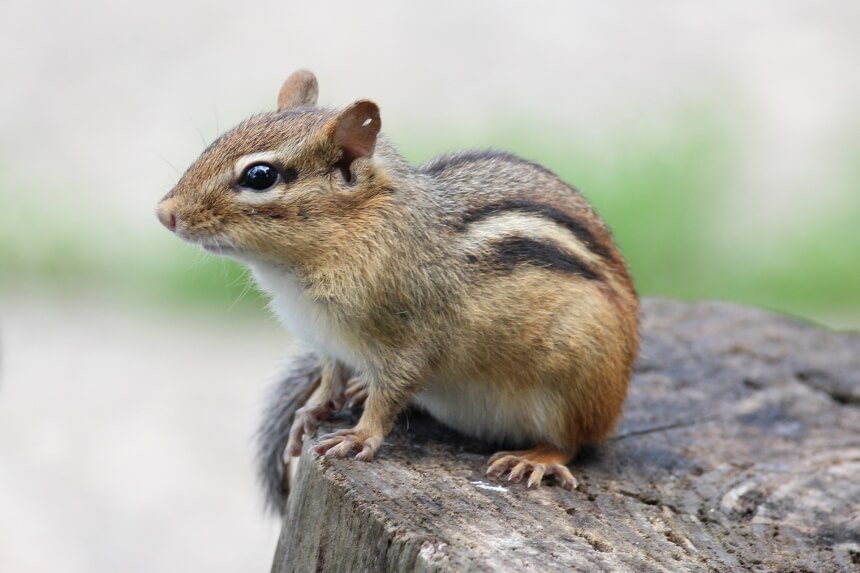
A chipmunk is a rodent about 9.6 inches long (including its tail) and weighs roughly two to three ounces. Their tail is about a third of their body length, and though it has fur, it’s pretty subdued. They’re easily identifiable with their distinct brown and black stripes that border a white one.
Unlike tree squirrels, chipmunks live underground. They dig tunnel networks with different “rooms” for various purposes, such as food storage or water drainage. When preparing for the winter, they store their food in their burrows. Take advantage of that information when searching for the best chipmunk traps.
A squirrel is a rodent member of the Sciuridae family, just like the chipmunks. Their primary identifier is their tail – they’re much bushier and longer than a chipmunk. In fact, a squirrel’s tail can grow longer than the squirrel itself!
There are multiple types of squirrels with distinct behaviors and preferences, so it’s essential to know how to tell them apart when using the best squirrel repellents in the market. Let’s look at some of the common ones you might encounter.
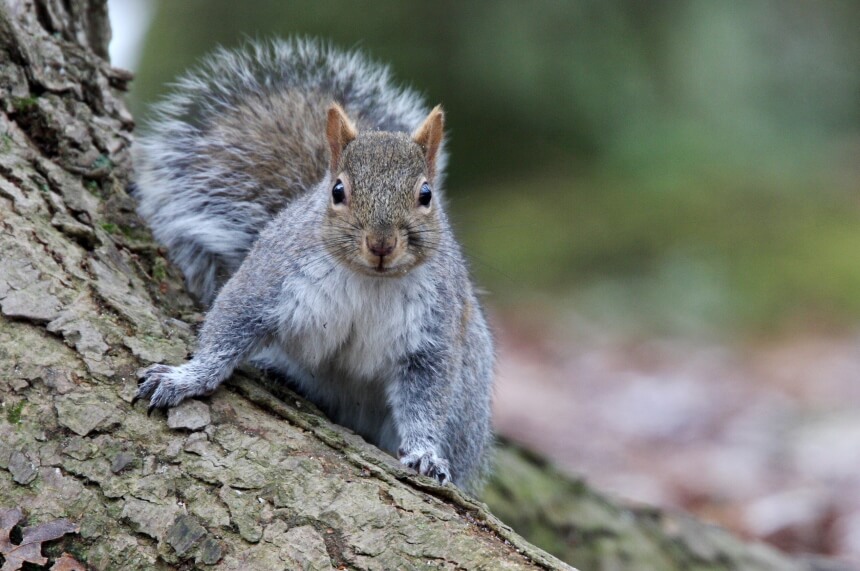
Tree squirrels are likely the ones most people think of when they hear the word “squirrel.” After all, their bushy tail, which stands taller than the squirrel, is very distinctive, and their overall appearance is widely recognizable.
Tree squirrels Trusted Source Urban Wildlife Squirrels All the interesting facts about these fur animals. unis.mcgill.ca are named as such because they are excellent climbers. Their nests are usually on higher ground, either on a tree branch or in a hollow part of the trunk.
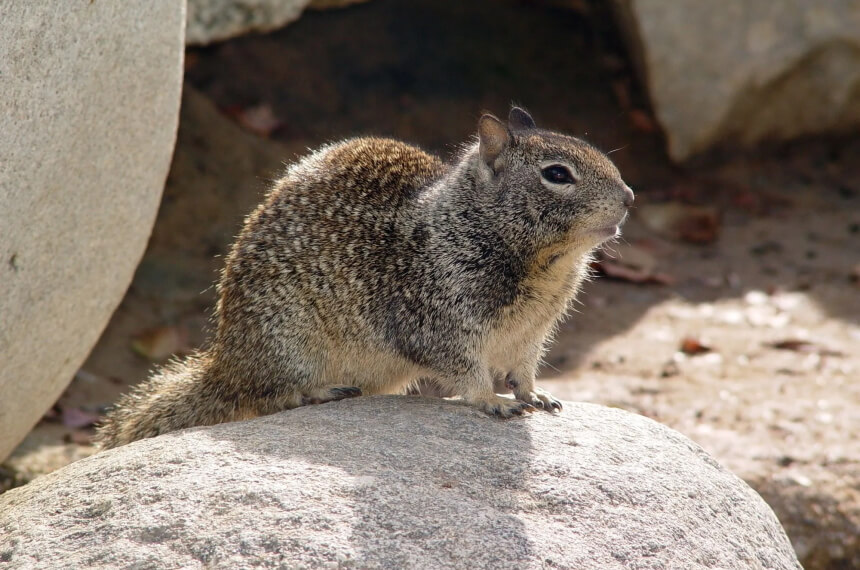
Unlike its other squirrel kin, ground squirrels live underground. They look similar to a chipmunk, especially in their appearance and their habitat of choice. So how do you tell them apart?
Thankfully ground squirrels still have distinct characteristics that set them apart from chipmunks. Red squirrels, for example, don’t have stripes and have a brighter red color than a chipmunk. Thirteen-lined ground squirrels have more stripes than a chipmunk.
And when comparing golden-mantled ground squirrels vs. chipmunks, all you have to do is look at their color and facial stripes. Golden-mantled ground squirrels Trusted Source Goldenmantled Ground Squirrel Bryce Canyon National Park U.S. National Park Service Nineteen species of ground squirrels occur in North America. Bryce Canyon is home to two species, the Golden-mantled Ground Squirrel and the Rock Squirrel. www.nps.gov are grey, while chipmunks are reddish-brown with stripes on their faces.
If you want to control their population in their backyard and use Ditrac Ground Squirrel Bait, keep in mind that other burrowing animals might also get affected. And there’s always the risk of secondary poisoning for these rodents’ predators.
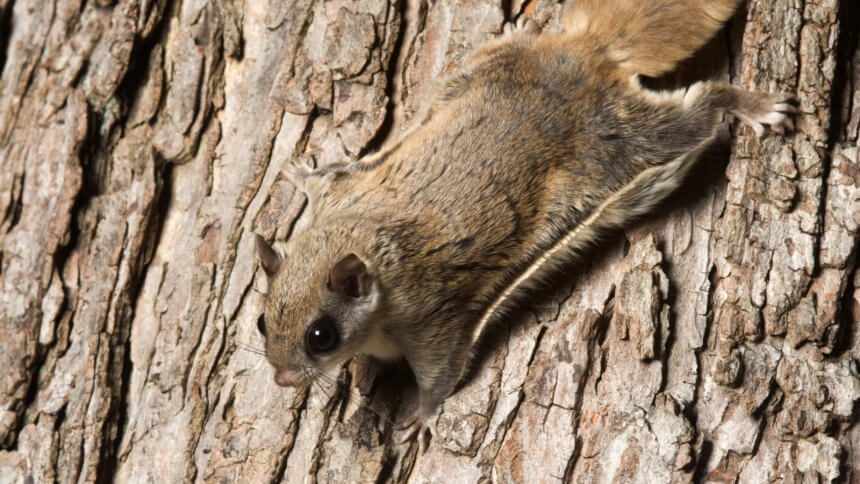
Flying squirrels don’t fly; they jump and glide across the air. They also live above ground, usually on tree branches. They even make nests similar to a bird. Their appearance is identical to a tree squirrel, except tree squirrels can’t glide.
Comparing chipmunk vs. squirrel doesn’t just end with their appearances. If you use the WCS NB Squirrel and Rodent Past Bait, it’s beneficial to know their behaviors and other characteristics.
Chipmunks and squirrels have different life spans. Chipmunks only live for up to five years, while squirrels can live up to twelve.
The rodent’s gender also affects its lifespan. This isn’t a problem for chipmunks because they’re primarily solitary unless it’s mating season. However, squirrels are active, especially males. They get aggressive and fight other male squirrels for territory, unlike females, who tend to be calmer.
Some people also like to keep squirrels as pets, so their survivability is better than those in the wild. Pet squirrels are better protected against predators than their wild counterparts.
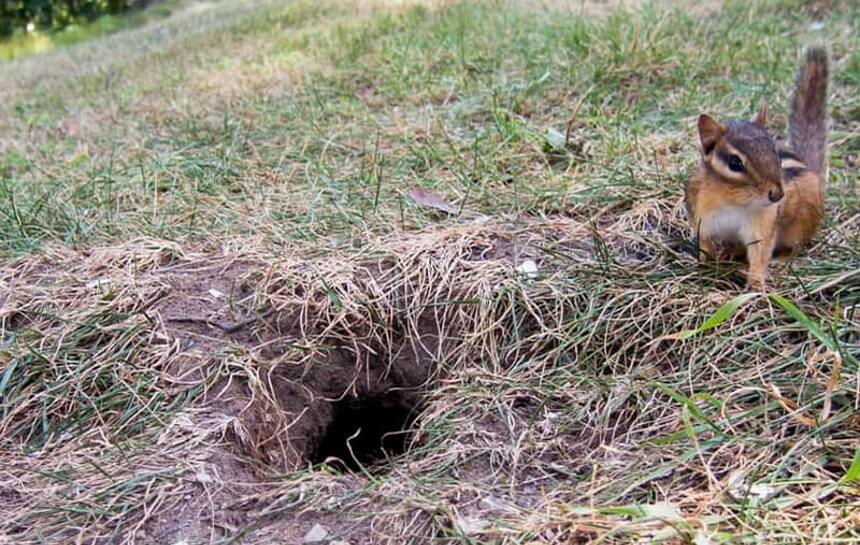
Chipmunks live underground and can dig tunnels as deep as 36 inches Trusted Source Eastern Chipmunk A rusty rump, two buffy to whitish eye stripes, and narrow dark brown to blackish stripes on the back and sides-the lower two on each side bordering a white or buffy white stripe-distinguish the “grinny” or ”ground hackee” (two colloquial names). www.esf.edu . Their tunnels branch into multiple rooms, each serving a specific purpose.
Squirrels, on the other hand, live on trees. Tree and flying squirrels, in particular, like to nest on tree branches. Ground squirrels are the only type of squirrel that burrows underground. If you’re trying to shop for the best squirrel traps, make sure you know what kind of squirrel you’re dealing with first. That way, you can take advantage of how they live.
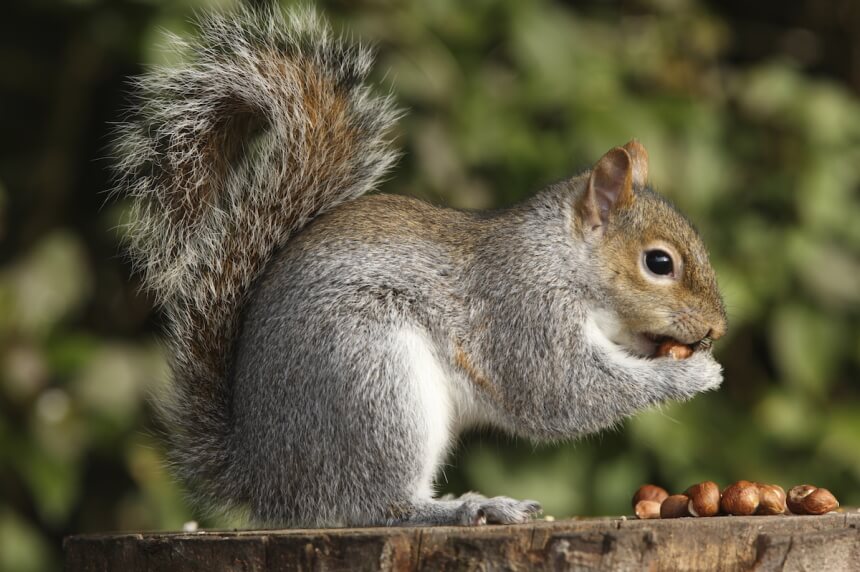
Squirrels and chipmunks share the same diet of nuts, seeds, berries, and insects. They’re both omnivores, so they even eat snakes and eggs sometimes.
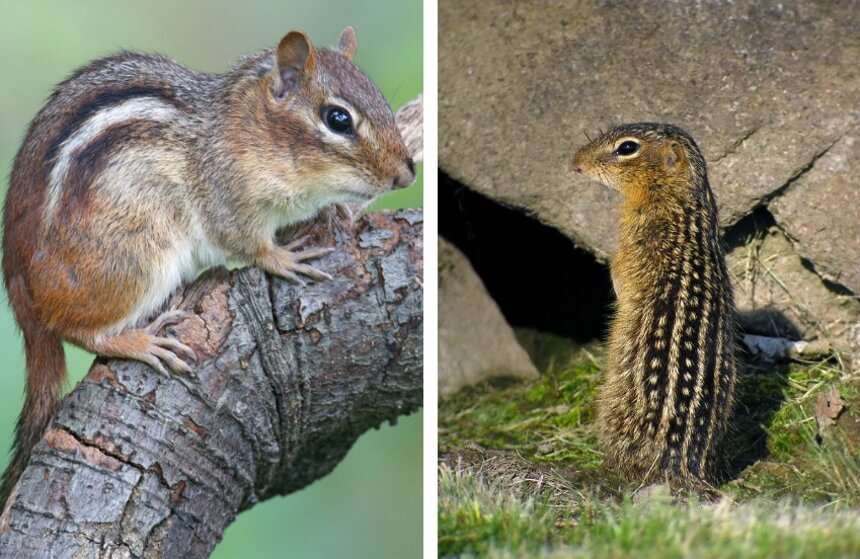
Squirrels, especially tree squirrels, have longer and bushier tails than chipmunks. But if you’re looking at a smaller species of squirrel, such as a ground or a red squirrel, it might be hard to say which kind of rodent you just saw.
The easiest way to tell the difference between a red squirrel vs. chipmunk is its color. Red squirrels have bright red fur, while chipmunks are reddish-brown with stripes on their back.
And if you’re trying to differentiate between a thirteen-lined ground squirrel vs. a chipmunk, then all you have to do is glance at the number of stripes. Thirteen-lined ground squirrels Trusted Source ThirteenLined Ground Squirrel Missouri Department of Conservation The thirteen-lined ground squirrel has 13 alternating brown and whitish lines some may be broken into spots along its back and sides, creating rows of whitish spots within dark lines. It stands upright to survey its surroundings and dives into its burrow when it senses danger. mdc.mo.gov have their namesake thirteen stripes, compared to a chipmunk’s five. Even if you don’t have time to count them one by one, a glance should be enough to tell you how many stripes you just saw.
When compared side by side, or if you happen to see them simultaneously, it’s easy to tell them apart. That’s because chipmunks are smaller than squirrels. Including their tail, chipmunks are about 9 inches long, while a squirrel’s full length can go as high as 24 inches. That’s because a squirrel’s tail is usually about as long as its entire body, if not longer.
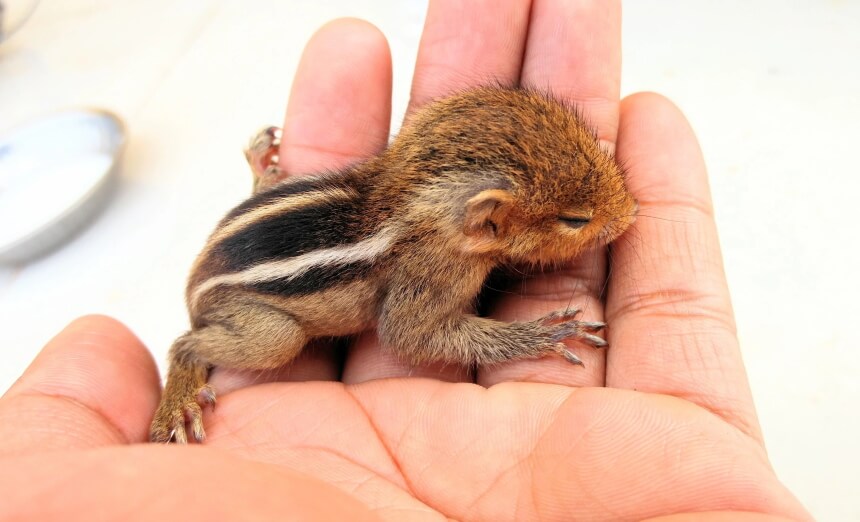
Chipmunks mate from February to April and June to August. Those are the only times you’ll see a chipmunk interact with each other, as they’re solitary creatures. Outside those months, you’ll see them roaming around on their own.
Squirrels, on the other hand, ovulate multiple times a year. They can get pregnant anytime between December and August and give birth as late as mid-November.
Baby chipmunk vs. baby squirrel has similar growth rates, too. Baby chipmunks take 8-10 weeks to be fully independent, while baby squirrels take 9-12 weeks to mature.
Both rodents store food for the winter because they don’t fully hibernate. Squirrels stay underground during the winter, surviving on food they stashed months ago. However, ground squirrels fully hibernate, going to sleep once winter starts and only waking up around spring. As a result, they’re the only squirrel that bulks up their fat reserves so they can survive hibernation.
On the other hand, chipmunks go into a deep sleep, only waking up periodically to eat something. Like other squirrels, they feed on the food they’ve been storing for months before going back to sleep again.
Squirrels are friendlier than chipmunks, and some people befriend them enough to become a pet. On the other hand, chipmunks tend to run away from people and can get aggressive if cornered.
Chipmunks and squirrels cannot mate with each other, despite belonging to the same family.
Chipmunks and squirrels are indeed related. They are both rodents and members of the Sciuridae family.
Both rodents are smart, as evidenced by how they build their nests. Ground squirrels and chipmunks dig separate rooms for various functions underground, while tree and flying squirrels build their nests on tree branches.
Chipmunks and squirrels may look different, but they have quite a few similarities. They are, after all, members of the same family. Comparing a chipmunk vs. squirrel requires you to pay attention to some of their distinct differences. But if you do confuse them with each other, don’t worry. Most baits and traps are designed to accommodate both, so you’ll get them either way. Just don’t try to befriend a chipmunk.